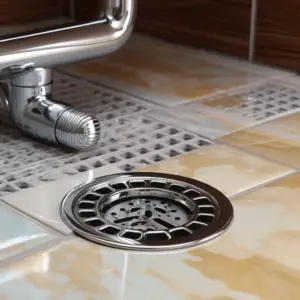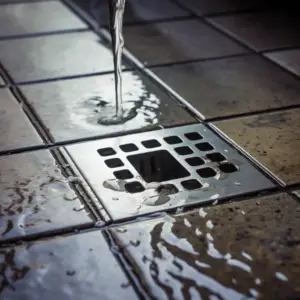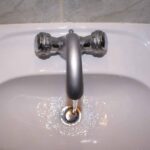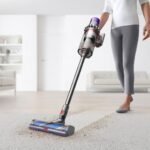Standing in the ankle-deep of murky standing water is the most disgusting thing to experience. It is even worse if the bathtub drain won’t drain at all, as this indicates that your shower drain is clogged.
It is vital to examine what would have caused the blockage thoroughly. How will you troubleshoot the problem? You need not worry if you’re reading the right article. Regardless of the cause, we’ll share how to resolve this issue via various simple and direct methods and tools.
Table of Contents
What Causes Shower Drain Clog?

Various culprits cause slow shower drain, such as a build-up of:
Soap and shampoo
When soap or shampoo compiles with hard water, it forms scum that narrows the drain passage obstructing the water flow over time. It also coats the showers, sinks, and bathtubs.
Once the soap scum turns into a solid form, it is complex to remove it.
Typically, soaps contain animal fat such as grease, talc, and wax which are susceptible to clogging your shower drain, particularly when combined with hair and the minerals in the water.
Hard water
Tap water is usually hard with minerals like magnesium and calcium, which corrode your spout pipes, coating their inner parts and harboring the adequate water flow.
Dirty and debris
Dirt on its own rarely causes a clog, but when it combines with soap and hair, it will begin to accumulate, leading to an obstruction.
Hair
Human hair is the leading cause of clogged bathroom drain. Strands of hair, incredibly long hair near the surface, deters smooth water passage. It wraps around other things like soap and dirt to form a severe clog and is also a friendly area for bacterial growth.
Tree roots
Trees can grow even in the tiniest cracks in the underground pipes. Therefore, the passage of shower water becomes obstructed and further leads to a clog.
Plunging Shower Drain Made It Worse: How to Prevent it from Happening
Sure. Attempting to force a clog through the drain with a plunger can worsen the situation. A plunger may not help if the clog is due to a hair build-up as you may lack sufficient suctions for the clog to break down.
Therefore, you need to observe specific rules when using a plunger to unclog the bathtub drain.
The correct technique to unclog your bathtub using a plunger is to cover the overflow. First, seal the overflow by removing the cover, put a rag over the hole and then apply hand pressure.
You allow the plunger to accumulate pressure in the drain system, possibly pushing the clog through.
Alternatively, place some petroleum jelly around the plunger’s rim for a better seal. Next, place it over the shower drain and run the water to an inch or two to increase the seal’s strength.
Vigorously use the plunger for one to two minutes, followed by running the water to check if the clog has cleared up and the water is draining freely once again. If it doesn’t work out, read on to our following remedy.
Use a Plumber’s Snake
This method is quite effective if your shower won’t drain or your bathtub is flooding because of a blockage. The snake is more robust, longer, and features extra aggressive hints for loosening up the blockage or hooking it for removal.
After removing the drain cover, insert the head of the snake into the drain while pushing it down without too much force. You may tilt it as you go or twist it using a drill based on the snake type.
Pull the snake back up, and it should come up with the trapped build-up clog and pull it free. Breaking up the clog as you run the water through the pipes while snaking is another way you can clear the clog.
The water flushes the freshly loose build-up through the system instead of settling back in place.
If necessary, you may require to do this repeatedly to ensure you’ve gotten most of the debris.
Please note that any point of resistance indicates that you may have found your obstruction. Thus try to break it up without scraping the pipe walls.
What Other Methods Can Unclog A Shower Drain?
Baking Soda and Vinegar
This mixture is a natural remedy for dissolving hair clogs without a plunger. For a start, pour a cup of baking soda into the clogged drain. After a while, add a cup of vinegar and allow the mixture to sit for some hours, then rinse out the drain with boiling water.
Boiling Water
Pour boiling water down your shower drain as the water temperature helps to disintegrate the soap scum and debris build-up efficiently for a proper wash away. Practicing this technique for a week will keep blockages away.
Signs of a Clogged Shower Drain
Bad odors
Generally, a shower drain’s smell is due to a build of soap scum and hair beginning to rot inside the drain. However, you may smell sulfuric gas or sewage in your shower, insinuating a problem with your primary sewer line requires an expert.
Water Puddles
If water cannot pass through the drain, it must somehow find its way. This issue creates pressure on the pipe, causing it to leak or even burst. Consequently, water might begin to pull around your showers due to water leaking outside the plumbing system.
Slow Drainage
Usually, shower water drainage should be close to the rate it flows out of the tap. If water is taking longer to drain after shutting it off, you have a clogged shower drain that hinders a smooth flow through the drain.
How will you prevent shower drain Clogs?

Use a Drain Cover- Since hair is the top cause of shower drain blockage, a bare rubber or plastic drain cover is an affordable way to put the issue at bay.
Skip the Body Scrubs– Body oils might make your skin feel incredible, but most of it hardens inside the pipes causing blockages. So it is better to avoid them.
Good Drain Maintenance– Drain cleaning should be a part of your cleaning routine. Purpose of having a bottle of distilled vinegar or baking soda and pour it after a short round of showers to keep the drain clear.
Is A Plunger Safe To Use On A Shower Drain?
You can use a plunger to unclog your shower drain, but you must seal the overflow drain first. It is paramount because the over-drain in the shower allows water to overflow into a pipe connecting to the significant tub.
Be aware that plungers work on suction power, and an over drain closes because it acts as a larger air vent that kills the suction. Therefore, it is crucial to seal the overflow opening before using a plunger, and the best approach is to cover it with a rag or duct tape.
If plunging fails to work, use the plumber’s snake through the overflow drain opening to clear the clog.


